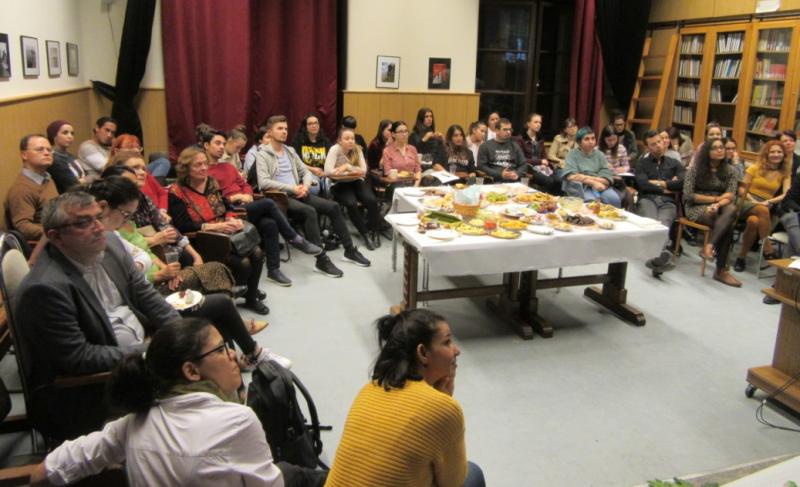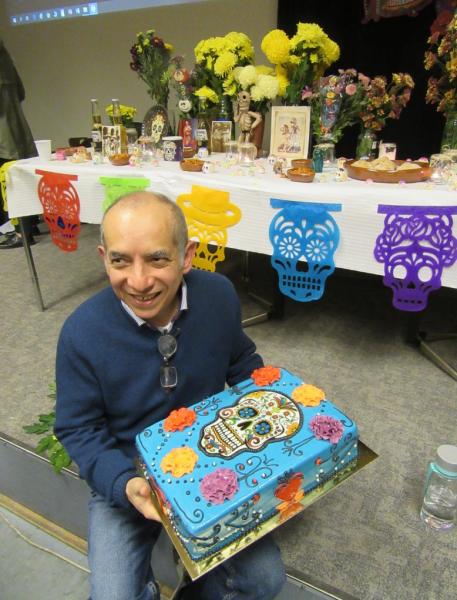Celebrating the Day of the Dead – Mexican Rituals
 On November the 6th, the Institute of English and American Studies of the University of Debrecen organized a program about the Mexican rituals of the Day of the Dead. This included the setting up of a traditional altar, with all kinds of typical items, like sugar and chocolate skulls, clay skeletons, and food offerings. The participants were divided in teams to answer a quizz, with a chocolate skull as the winner’s prize, and students were invited to colour skull prints. At the closing highlight, the program featured a lecture by the Mexican visiting lecturer, Agustín Cadena.
On November the 6th, the Institute of English and American Studies of the University of Debrecen organized a program about the Mexican rituals of the Day of the Dead. This included the setting up of a traditional altar, with all kinds of typical items, like sugar and chocolate skulls, clay skeletons, and food offerings. The participants were divided in teams to answer a quizz, with a chocolate skull as the winner’s prize, and students were invited to colour skull prints. At the closing highlight, the program featured a lecture by the Mexican visiting lecturer, Agustín Cadena.
As practised by the indigenous communities of Mexico, el Día de los Muertos (Day of the Dead) commemorates the transitory return to Earth of deceased relatives and loved ones. The festivities take place each year at the end of October to the beginning of November. This period also marks the completion of the annual cycle of cultivation of maize, the country’s predominant food crop.
 The Day of the Dead celebration holds great significance in the life of Mexico’s indigenous communities. The fusion of pre-Hispanic religious rites and Catholic feasts brings together two universes, one marked by indigenous belief systems, the other by worldviews introduced by the Europeans in the sixteenth century.
The Day of the Dead celebration holds great significance in the life of Mexico’s indigenous communities. The fusion of pre-Hispanic religious rites and Catholic feasts brings together two universes, one marked by indigenous belief systems, the other by worldviews introduced by the Europeans in the sixteenth century.
The Mexican celebration of the Day of the Dead was proclaimed in 2008 as Intangible Cultural Heritage of Humanity by UNESCO.